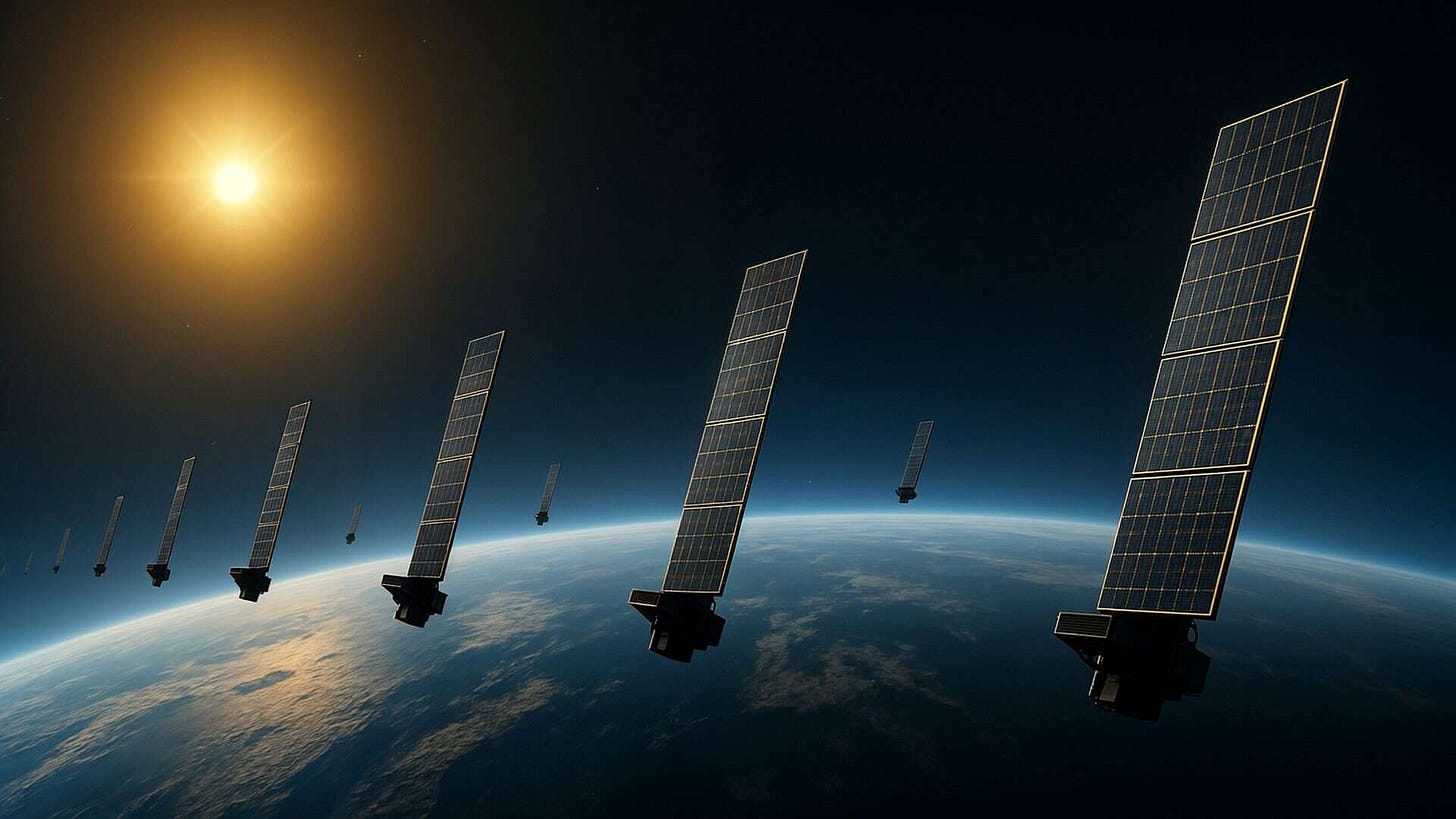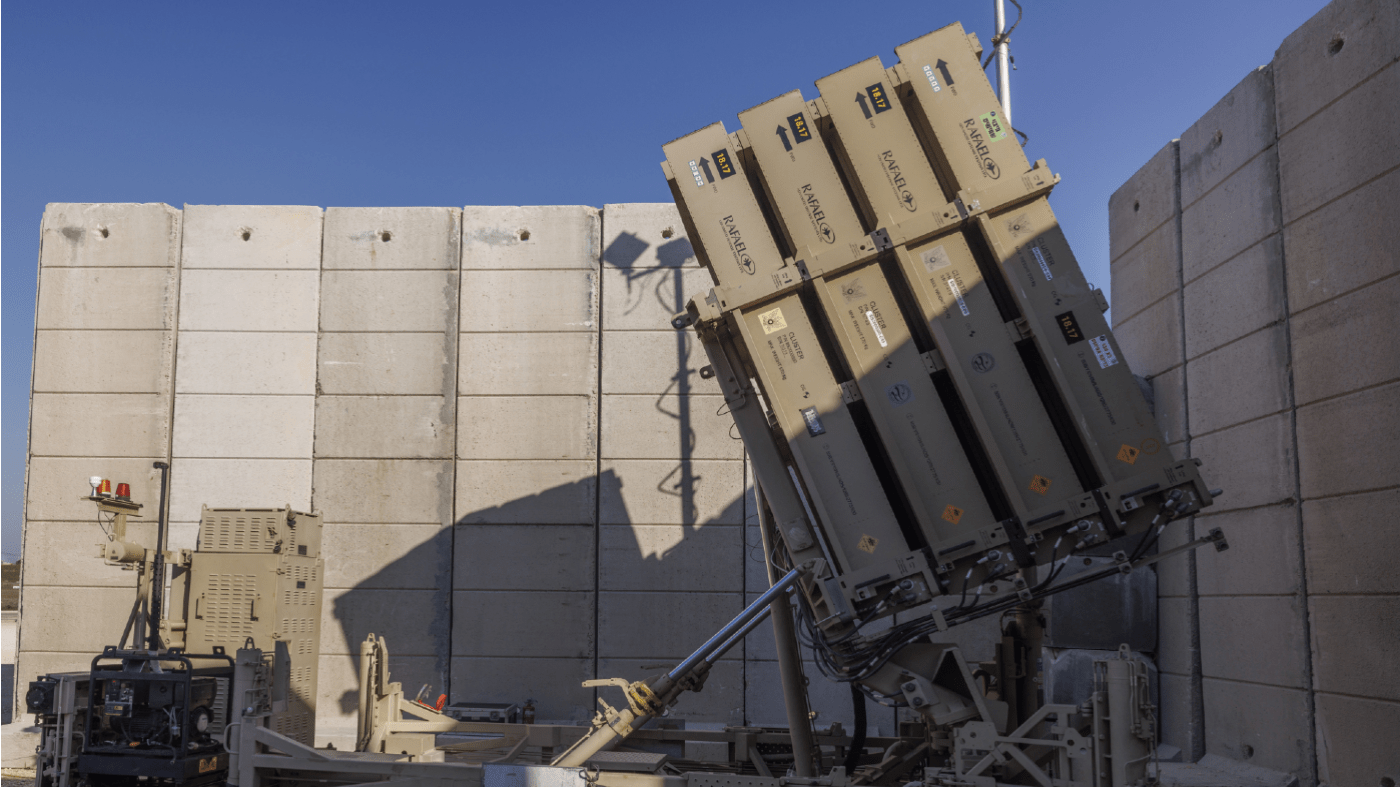10 Stocks Poised to Soar with the Golden Dome Initiative
The Golden Dome could become a generational wealth maker. You just have to pick right
President Donald Trump’s Golden Dome for America is a proposed next-generation missile defense shield intended to protect the U.S. homeland from advanced missile threats.
Announced in early 2025, the initiative envisions a multi-layered defense spanning land, sea, air, and space, inspired by Israel’s Iron Dome but on a much larger scale.
The Golden Dome aims to deter adversaries and preserve peace through strength, reflecting Trump’s defense strategy focused on robust deterrence. If realized, it would be an unprecedented undertaking: hundreds of satellites, new interceptors in space, and cutting-edge directed-energy weapons all integrated into a unified shield.
This article analyzes the scope and goals of Golden Dome, its economic and industrial impact, the companies involved, from major contractors to emerging players, an evaluation of select firms, a realistic development timeline, and the strategic implications for both defense and commercial sectors.
1. The Golden Dome Initiative
The Golden Dome is envisioned as a comprehensive missile defense architecture designed to shield the United States from a wide range of missile threats, including ICBMs, submarine-launched ballistic missiles, hypersonic glide vehicles, advanced cruise missiles, and even potential space-launched weapons.
In scope, it far exceeds existing systems. Israel’s Iron Dome focuses on short-range rockets, while Golden Dome is designed to counter everything from short-range missiles to ultra-fast hypersonics and orbital threats across the entire U.S. territory.
The initiative’s core goal is to forever end the missile threat to the American homeland, completing Ronald Reagan’s vision of a Strategic Defense Initiative with modern technology.
Key objectives and features
Full-Spectrum Missile Interception
Golden Dome is designed to intercept missiles in all phases of flight, from boost phase shortly after launch, through midcourse in space, to terminal phase as warheads descend.
It also explores left-of-launch options to neutralize missiles before they fire, using methods such as cyber operations or preemptive strikes.
The ultimate goal is a nearly 100% interception success rate, an ambitious target that Trump described as shooting bullets out of the air with near-perfect accuracy.
Space-Based Defense Layer
A signature aspect of Golden Dome is the deployment of weapons in space for the first time in U.S. history.
Hundreds of low-Earth orbit satellites would form a detection and interception constellation. This includes a space sensor layer to provide persistent global missile tracking, and potentially space-based interceptors or lasers capable of striking enemy missiles from orbit during boost or midcourse phases.
These orbital interceptors, essentially space weapons, mark a bold extension of U.S. defense into the space domain.
Multi-Layered Architecture
The system will integrate existing missile defense platforms with new technologies into a layered shield.
Established assets such as THAAD interceptors, Patriot PAC-3 missiles, Aegis/SM-3 interceptors, and the C2BMC command and control network are expected to plug into Golden Dome’s architecture.
On top of this, next-generation technologies will be introduced, including directed-energy weapons like high-power lasers and microwave systems to destroy missiles, as well as hypersonic interceptors.
The goal is a layered defense where, if one layer misses, another can engage, providing coverage across all altitudes and distances.
Nationwide Coverage
Golden Dome’s coverage area spans the entire continental United States, and possibly Canada, unlike the regional defenses of the past.
This requires overlapping sensor and interceptor coverage across North America. Trump specified installations in multiple states, Alaska, Florida, Georgia, Indiana, and others, indicating a dispersed network of sites and launchers on U.S. soil.
Canada has also expressed interest in participating, seeking protection under the Dome.
Rapid Deployment Timeline
Politically, Trump set an aggressive timeline, calling for the Golden Dome to be fully operational before the end of his term, by late 2028.
An executive order in January 2025 mandated that initial architecture plans be delivered within 60 days. The Department of Defense responded with unprecedented speed. By April 2025, U.S. Space Command had already finalized design options and sent recommendations for Golden Dome’s architecture to Defense Secretary Pete Hegseth.
This urgency reflects the growing threat identified in U.S. intelligence assessments, which warn that China, Russia, North Korea, and Iran are rapidly advancing missile capabilities that could overwhelm current U.S. defenses in the next decade.
Golden Dome is intended as a future-proof solution to stay ahead of these threats.
2. Economic Potential
The Golden Dome initiative carries enormous economic stakes, potentially becoming one of the largest defense projects in history.
Initial official estimates put the cost at around $175 billion. Trump announced a down payment of $25 billion in a budget proposal to jump-start construction.
However, defense analysts widely expect the actual expenditures to be far higher.
The Congressional Budget Office projected a cost between $161 billion and $542 billion over 20 years just for the space-based components. Some Republican lawmakers involved have even suggested the final price tag could reach “trillions of dollars” in the long run.
In short, Golden Dome represents a multi-decade megaproject with massive revenue potential for defense contractors and technology firms.
Industry analysts note that if funded, Golden Dome would effectively be a “money fountain” for the defense and aerospace sector, creating significant new markets for hardware, software, and services.
For perspective, the proposed $175 billion budget rivals the inflation-adjusted cost of the Apollo Moon program or the entire F-35 Joint Strike Fighter program.
This influx would benefit a wide array of companies, from the prime contractors building interceptors and satellites, down to subcontractors supplying components and software. Reuters aptly summarized it as “competition intensifies over what could become one of the world’s largest defense contracts.”
Some key areas of economic opportunity include:
Satellite Constellations
Golden Dome calls for a vast network of sensors and possibly interceptor satellites in low-Earth orbit (LEO).
One industry bid outlined the need for 400–1,000 tracking satellites and around 200 interceptor satellites in orbit. Manufacturing and launching these spacecraft could cost tens of billions of dollars.
For example, if ~600 satellites are built at an average cost of $50–$100 million each (including sensors and launch), that alone is on the order of $30–$60 billion in business.
Companies like Lockheed Martin, Northrop Grumman, L3Harris, and emerging “new space” firms are poised to compete for these contracts.
Launch service providers (SpaceX, United Launch Alliance, possibly Rocket Lab’s new medium rocket) would likewise see a windfall launching hundreds of defense satellites.
Missile Interceptors and Weapons
The Golden Dome will integrate and procure large numbers of interceptors, both existing types and new designs.
This includes more THAAD and Patriot PAC-3 missiles (made by Lockheed Martin and RTX, respectively) to bolster terminal defense, and development of advanced interceptors for boost and midcourse kill (such as the planned Glide Phase Interceptor, a program involving Northrop and Raytheon).
Additionally, directed-energy weapons (high-energy lasers or microwave systems) are likely to receive investment as potential non-kinetic interceptors.
Boeing and Lockheed have already developed prototype laser weapons that could be scaled up, and Kratos Defense
The interceptor procurement could be extremely lucrative: one study from the American Enterprise Institute concluded that achieving robust space-based interception might require “thousands of interceptors in low-Earth orbit” for global coverage, implying enormous production if pursued.
Even if that is scaled down, the missile defense warhead inventory may need to double or triple, benefitting missile manufacturers (Lockheed, RTX, etc.) significantly.
Ground Infrastructure and Upgrades
Golden Dome’s architecture will require new or upgraded radar systems, command-and-control centers, communication links, and launch sites across the country.
Funds will flow into radar vendors (for early warning and fire-control radars) and battle management software developers.
For instance, L3Harris builds advanced missile-tracking satellites and ground systems in Fort Wayne, Indiana, a capability specifically highlighted by lawmakers as essential to Golden Dome.
We can expect multi-billion-dollar contracts to expand ground-based sensors (like next-gen over-the-horizon radars or space surveillance networks) and integrate all elements via battle management networks (likely involving companies like Northrop, Lockheed, and software firms including Palantir).
Advanced Computing, AI & “As-a-Service” Models
The scope and scale of Golden Dome will push requirements for data integration, AI-driven threat detection, and cloud-like services.
Notably, the administration has shown interest in “missile defense as a service”, allowing commercial firms to operate portions of the system (such as running satellite constellations) on a subscription model.
This could open novel revenue streams where the government pays companies annually for providing persistent detection or communication services.
Companies like Palantir (AI/analytics) and Anduril (autonomous systems) are cited as key contributors for software, sensor fusion, and AI capabilities.
Indeed, a consortium led by SpaceX reportedly proposed a space-based solution sold via subscription, aligning with Trump’s push for commercial innovation. If adopted, this model means ongoing revenue for service providers (much like the government buying satellite imagery or cloud services today).
Broad Supply Chain Suppliers
Importantly, the spending will cascade to countless subcontractors and suppliers. A program of this magnitude engages the entire defense-industrial base.
Materials and electronics suppliers, for example, stand to gain: the initiative will demand radiation-hardened microelectronics, precision optical sensors, high-end communications gear, rocket propellants, and more, keeping many specialty contractors busy.
Companies making components like radio-frequency filters, oscillators, sensors, and propulsion units will receive orders from the prime contractors. (We discuss specific smaller firms in the next section.)
Lawmakers have stressed that the Golden Dome’s ecosystem should involve “big companies, mid-sized companies, small companies” alike.
In fact, program advocates tout a “Silicon Valley mindset” for Golden Dome, implying non-traditional vendors and startups will have opportunities to contribute, potentially driving costs down with innovation.
In summary, the revenue potential by sector is vast
Space-based systems (satellites & launch) might consume a large share, potentially $50–$100 billion+ if hundreds of satellites are deployed.
Missile manufacturing and weapons development could account for another huge portion, given the expensive interceptors and R&D for directed energy (tens of billions).
Ground infrastructure and command systems may be on the order of tens of billions as well, spread across facilities and IT contracts. Over a multi-decade span, the defense sector stands to gain hundreds of billions of dollars, with individual companies securing multi-billion-dollar contracts if they capture key segments.
For instance, Lockheed Martin and Boeing are maneuvering to secure “significant shares” of this work, and SpaceX (if it remains in contention) could see a major boost as the lead launch and satellite services provider.
Even mid-tiers like L3Harris (e.g., building sensor satellites), and newer entrants partnering with primes may see contracts worth hundreds of millions or more.
However, it must be noted that as of mid-2025, funding for Golden Dome is not yet guaranteed. A proposed initial $25 billion appropriation was tied to a broader defense spending bill in Congress, which faces political hurdles.
The full $175 billion (or more) would likely be appropriated over many years, subject to Congressional approval each budget cycle.
If the program proceeds, the economic boon will be immense, but if political or technical challenges stall it, some of these projected revenues may not materialize on the timeline hoped.
Still, the expectation of the Golden Dome has already prompted industry investments and positioning (mergers, acquisitions, R&D) in anticipation of a windfall, as detailed next.
3. Industry Participants
Keep reading with a 7-day free trial
Subscribe to Daniel Romero to keep reading this post and get 7 days of free access to the full post archives.










